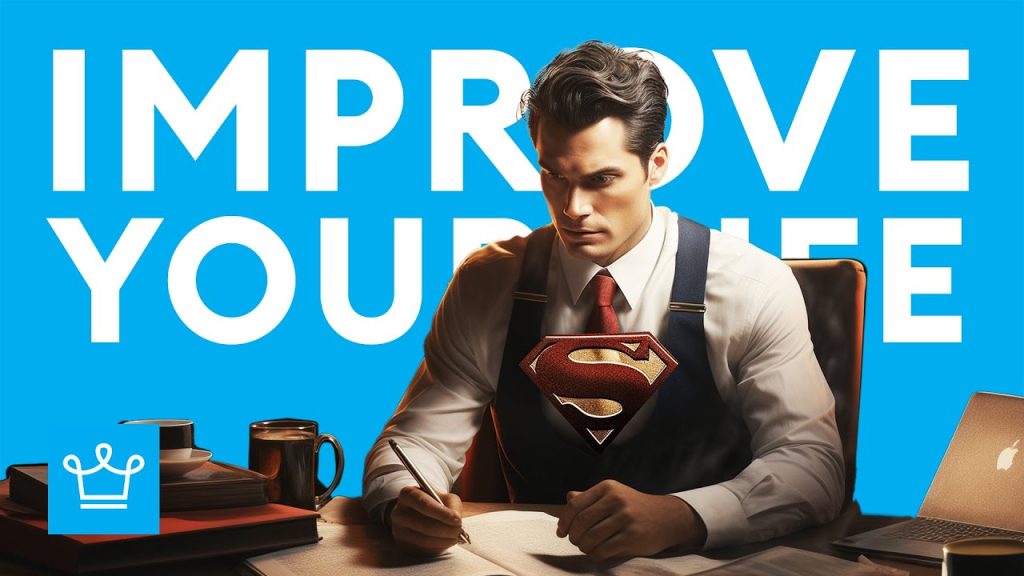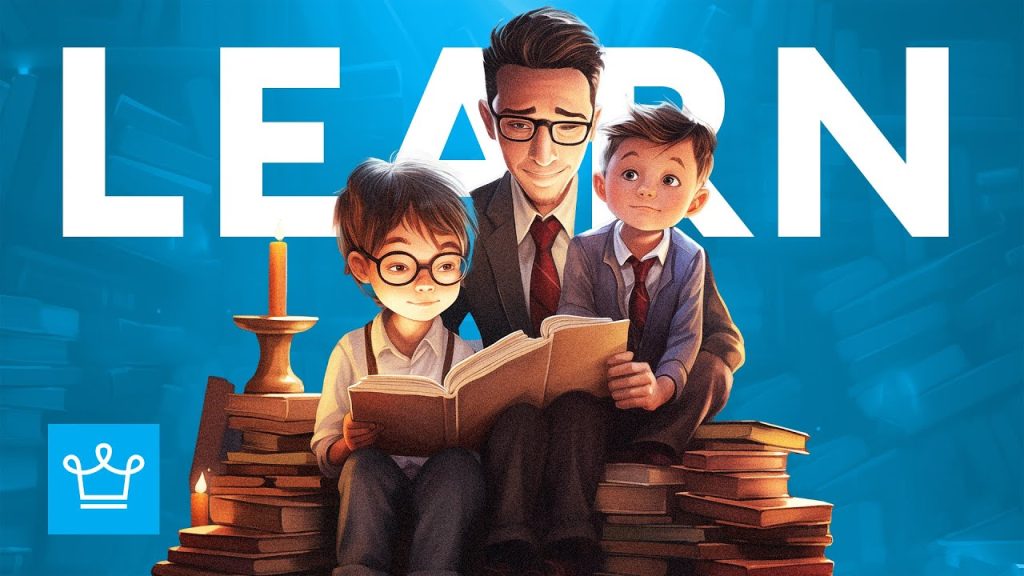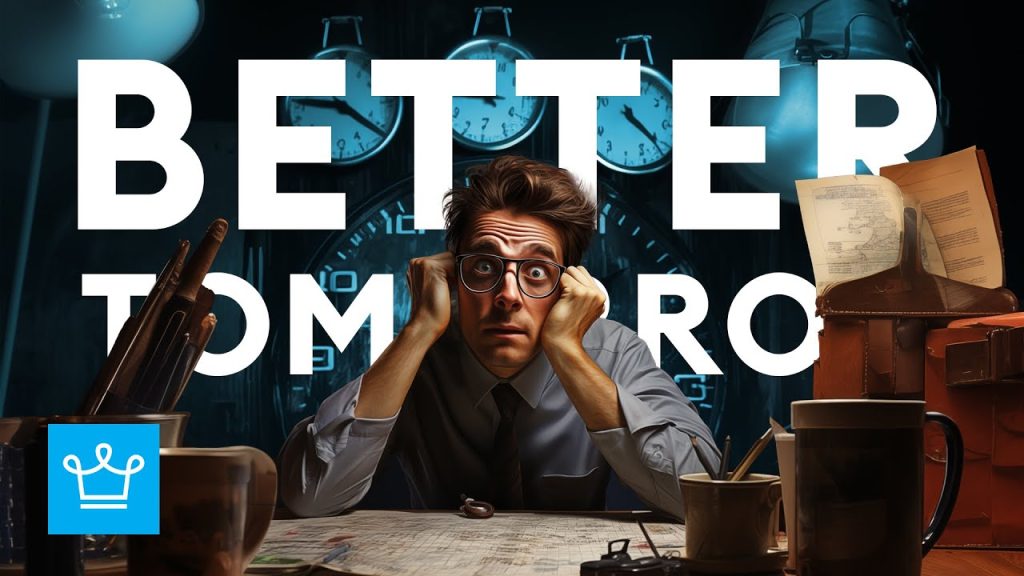Want to Learn the Secrets Behind the Continuous Growth of Some Successful Companies? You’ve Come to the Right Place.
Do you know how some successful companies manage to get things right and keep growing?
Setting goals for yourself is one process, but setting goals for a whole company, where thousands of people are involved, is a different story.
In this article we’ll share the secrets of how companies like Google, Netflix, Spotify and many more, managed to constantly find success.
It’s not all about innovation, instead, they all follow the same proven framework.
Welcome to Alux.com – the place where future billionaires come to get inspired. If you’re not subscribed yet, you’re missing out.
It’s no secret that reading an article about growth of different companies can be mind-numbing. So why not switch over to the video version of this article:
With that out of the way, let’s get straight into the article.
1
Intel
We start with Intel because that’s when this framework started to take shape.
In 1975, and don’t worry, this is not a history lesson, John Doerr, a salesperson at Intel, was introduced to this new framework, called OKR.
OKR stands for Objectives and Key Results. It’s a goal setting framework that’s meant to help companies achieve their objectives in the most straightforward and efficient way possible.
For this to work, the objective needs to be concrete and the key results have to be measurable. At the end, you either did it, or you did not, there is no gray area.
With this framework, John Doerr became one of Intel’s most successful salespeople and helped the company become the giant that it is today.
And he didn’t start there, after his work at Intel was done, he moved into venture capital and one of the first startups he invested was:
2
In 1999, John Doerr proposed the use of OKR to this cool new startup called Google.
Here’s what Larry Page had to stay about it:
“OKRs have helped lead us to 10× growth, many times over. They’ve helped make our crazily bold mission of ‘organizing the world’s information’ perhaps even achievable. They’ve kept me and the rest of the company on time and on track when it mattered the most.”
Here’s how an OKR should look like:
I want to achieve ____ as measured by _____
In Google’s case, here’s an example of one of their early OKRs:
We want to make surfing the web easy and fast, as measured by, decreasing the loading page time from 1.4 to 1 seconds by the end of the year.
From this example, two things are clear.
One, the key results are easy to measure, at the end of the year you either did it, or not. Secondly, it creates very clear tasks for the rest of the team and the goals align.
3
Between 2010 and 2015, the CEO of Twitter was Dick Costolo. Previously, he spent 2 years at Google, where he learned the value of using the OKR framework to set goals.
When he joined Twitter, one of the first things he did was adopting the OKR method to rebuild the company from ground up.
“We’ve adopted that at Twitter. I think that was a super effective way of communicating context to other teams about what you’re trying to do and what you’re trying to accomplish.”
During the same period, Time Magazine has named him one of the most influential tech CEOs.
Here’s a funny story about Dick Costolo. Before he entered the tech world, he was a stand up comedian.
After he landed the Twitter job, he said:
“First full day as Twitter COO tomorrow. Task #1: undermine CEO, consolidate power.”
And funny enough, one year later he replaced co-founder Evan Williams as CEO.
4
Netflix
This is a perfect example of a company who knew how and when to innovate.
You might not know this, but Netflix used to mail DVDs to your house.
And another thing you might not know is that Netflix is another giant company that uses OKRs as their core of goal setting.
An OKR framework from Netflix would look like this:
“We want to increase the time user spend on our platform, as measured by “increasing the retention rate from X to Y and by increasing the amount of original content from X to Y.”
Here’s a followup to that OKRs. If Netflix wants to compete with other streaming services, they need to also invest in their original content. But big film makers are more interested in the movie theaters.
By the way, did you know that for a movie to be eligible for award nominations, it needs to play in a movie theater for at least 7 day?
Netflix knows, and they actually rented the one of New York’s most iconic movie theaters, just for their own special theatrical releases. And that is why they are one of the most successful companies of this age.
5
Amazon
One of the biggest successful companies in the world, run by the richest, or second richest man in the world, depending what Elon tweeted last night, also runs on OKR.
Jeff Bezos is a big fan of this system and that’s how he managed to keep Amazon the leader of eCommerce.
His approach to OKRs is built around things that are stable in time. A lot of people asked him “how things will change in 10 years” but he said almost nobody asks him what won’t change in 10 years.
And when you think about it, people will always want to buy a lot of things, at low prices and with fast delivery. This is true now, it was true 5 years ago and it will be true 10 years from now.
We teach you exactly how to write good OKRs and how to implement them in our Goal Mastery Course, we just launched this Sunday.
We spend over 1.5 years making sure we deliver one of the best learning experiences on this subject. No bullshit, just value.
Go to goalsbyalux.com and find out how this course can help you turn your goals into reality.
6
For 11 years, Jeff Weiner has helped Linkedin become what it is today – one of the most successful companies of all time.
Over 675 million people are using Linkedin to advance in their careers and find new opportunities.
Jeff is also a big fan of OKRs and has used this framework to turn Linkedin into a $20 Billion company.
In his words:
“OKRs should be something you want to accomplish over a specific period of time that leans toward a stretch goal rather than a stated plan. It’s something where you want to create greater urgency, greater mindshare.”
7
Microsoft
At a very early age it was clear that Bill Gates was an excellent programmer.
In 1978, he promised Intel he would deliver a new update on their Microsoft software in 4 weeks. Intel thought he was crazy and that can’t happen.
And they were right. He failed and delivered 2 weeks late. It turns out Gate was an excellent programmer but a terrible project manager.
Do you remember John Doerr from number 1? Guess who helped Bill Gates to manage his goals better and introduce him to OKRs?
Him and Gates became good friends and a lot of the framework John Doerr implemented on Intel was transferred to Microsoft.
Gates actually wrote about the incident and how OKRs help push Microsoft forward, in his famous notes, which you can check out at gatesnotes.com
If you are a Bill Gates fan and want to read more articles about him, don’t forget to check out 15 Predictions Bill Gates Made That All Came True.
8
Uber
This is a prime example of how a company managed to become one of the most successful companies by using this framework of goal setting.
There’s a famous napkin where you can see Uber’s business model. From you, it’s pretty easy to draw the OKR framework.
The goal is to increase demand by increasing the number of drivers and the percentage of geographical coverage.
It’s simple and measurable.
Right now, Uber has over 3 million drivers in 65 countries.
With new regulations coming in, it will be interesting to see how Uber plans to manage this situation.
9
Dropbox
We love the origin story because it’s one of those classic tales where someone needs something, can’t find it so he builds it himself.
When Drew Huston was a student back in 2007, he always seemed to forget his USB stick at hope or misplaced it somewhere. He looked for some solutions but couldn’t find anything so he built one himself, building dropbox as a startup and launching it a year later.
Ok so that’s the story, but how did he manage to grow it to what it is today?
Drew said he modeled Dropbox after Google’s OKR system, which is based on yearly and quarterly goals.
He’s also a big fan of a quote from Voltaire which we actually use a lot in our daily lives:
“Perfect is the enemy of good.”
If you want something to be perfect, you’ll never get it done.
10
Adobe
Before 2012, Adobe used to work with an annual performance review which did very little to push the company forward. As a matter of fact, it actually was actually hurting them a lot because the process was tedious and time consuming and provided little value to no value.
For those of use who don’t know, when a company does an annual performance review, they look at the last year, find who performed good and who didn’t and act accordingly.
Doesn’t sound like a pretty fun situation, does it. It makes the employees feel like numbers rather than assets and talents.
The company was also planning to move all their operations to cloud and to a subscription based platform, so a lot of things were happening at the same time.
So they decided to scrap everything and start from scratch, with an OKR system they call “check ins”. In this new system, the purpose of the management was to get feedback from the team members on what they plan to achieve in the following quarter and how to help them get there.
They realized that their greatest assets were coming to work in the morning and leaving to friends and family in the evening, and they built their goal system on that.
We hope you learned something valuable in this article, Aluxers.
Question:
We’d love to know if you ever used any kind of system to measure and track your goals? Let us know in the comments.






